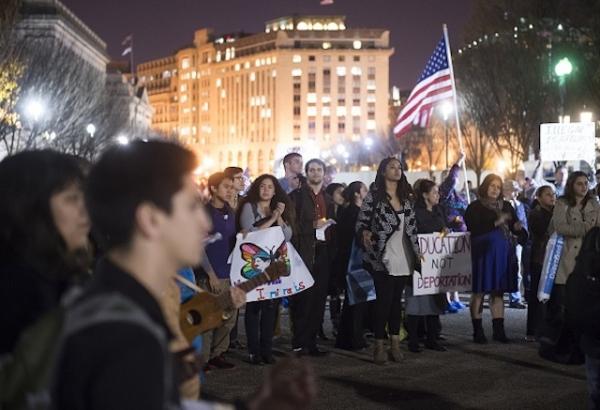
Sonoma County Latinos’ involvement in politics has grown by leaps and bounds in the last 10 years since the Latino population exploded in the ‘90s. However, voter registration and participation could be higher.
According to a new Pew Research Center analysis of U.S. Census Bureau data, Latino millennials will make up 44 percent of the 27.3 million eligible Latino voters in 2016. This represents “a share greater than any other racial or ethnic group of voters.”
Young people traditionally are not active in the political process. This is particularly true in regards to Latino millennials, who have a lower participation rate than other ethnic groups. According to the Pew Research Center, in 2012, 37.8 percent of Latino millennials voted, compared with 53.9 percent among non-millennial Latinos.
Caroline Banuelos, president of the Sonoma County Latino Democratic Club since 1993 and chair of the Sonoma County Board of Supervisors Community & Law Enforcement Task Force, said getting more Latino millennials involved in politics is a two-goal process registration and voter education, which involves educating people why it’s important to vote. “Don’t tell them who to vote for, but just to vote,” Banuelos said.
According to Banuelos, Latino millennials need to know how important it is to vote. “Every election affects every aspect of your life,” she said.
In regards to the the lack of racial diversity within the Democratic presidential candidates, considering the Republican Party has Ted Cruz, Marco Rubio and Ben Carson, Banuelos said there is a slight bias within the Democratic Party. “There’s still a reluctance to share power with people of color,” she said.
Another factor Banuelos said could hinder minority candidates is “Democrats are more critical of candidates and want them to be perfect.”
Hillary Clinton could become the first woman president, but she is facing tough competition from Bernie Sanders when it comes to millennials. In Iowa, Sanders crushed Clinton among voters between the ages of 17-29, winning 84 percent of the vote to Hillary Clinton’s 14 percent.
Amanda Claiborne, a Bernie Sanders organizer, registers students to vote at Santa Rosa Junior College every Tuesday. Claiborne believes Latino millennials will not vote Republican because they nominated Latino candidates like Cruz and Rubio, candidates seen as “upper class Latinos of European ancestry” who do not represent the majority of Latinos in the country. In Claiborne’s opinion, just because a Latino could receive the Republican nomination wouldn’t make much of a difference for Latino millennials in deciding who they vote for.
Rebecca Perez, 19, remains undecided. When asked if she might vote Republican if a Latino is chosen, she said, “My vote is more dependent on what they have to offer, rather than if they are Latino.”
Laura Jimenez, 20, a nursing major, would consider voting Republican if the party chooses a Latino candidate. “They have an idea of our values and that’s kind of important,” she said.
SRJC history instructor Laura Larque is actively involved with the local Latino community and has her own KBBF radio show titled “Un Viaje al Pasado,” or “A Trip to the Past.” Larque said only small portions of the Latino community would vote Republican if Cruz or Rubio become the Republican nominee.
“Cuban-Latinos yes, Puerto Ricans perhaps, but Mexican and Central Americans, they will not,” Larque said. “Historically, Cubans have been very, very conservative because they have had a very different life experience in the United States.”
Larque said Sanders could mobilize Latino millennials. “Bernie Sanders and Donald Trump are sitting in very opposite ends of the spectrum,” she said. “[Sanders] brings up issues that are really affecting young people, [such as] employment, education, housing and health care.” Larque said she hopes Latinos see more in Sanders.
In regards to Trump, Larque said, “Donald Trump is attracting the middle-age white and young whites who are very upset about the same issues as Latinos but feel resentful because they feel like minorities are taking away everything.”
According to Larque, Cruz and Trump are alienating large segments of Latino voter populations. “Cruz is scary,” she said. “I don’t know who is more scary between him and Donald Trump.”
Voter participation among Northern California Latinos is not as high as Latinos in Southern California. To increase it, Larque said, “We need to do canvassing, lots of canvassing. I think the Democratic Party really needed to approach us as of last year, the Latino voters. Going door to door, going to different organizations and setting up tables in Mexican stores.”
Banuelos said, “The fact that Latino millennials make up 44 percent of Latino eligible voters blows me away. If you could only imagine if half of them would vote how important that would be. We need to aggressively approach Latino voters with more education and for them to become informed.”

